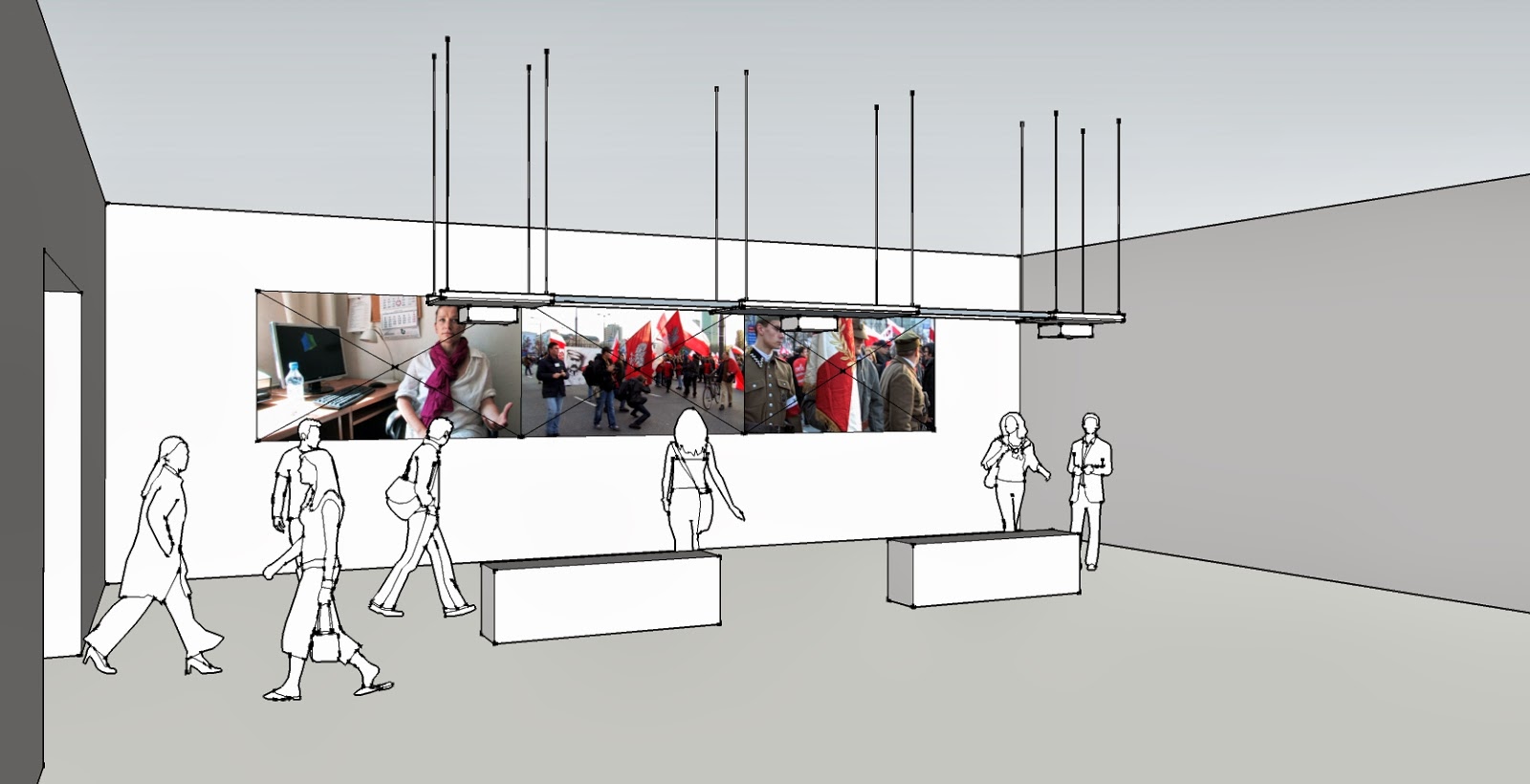Protest Archive- Colectivo Campo del Cielo (2012) | Installation

The Protest Archive (2012), created by the protest group Colectivo Campo del Cielo, utilized the HGB Rundgang in Leipzig, Germany as a venue for protest. It featured a research table displaying articles related to the pertinent issues and was supplemented by a monitor that showcased a series of videos addressing extractivism. Colectivo Campo del Cielo was established in response to a call from the Moqoit indigenous community and comprised a small collective of artists, anthropologists, and representatives from the Moqoit people. The topic explored in The Protest Archive (2012) highlighted the politics of misinformation within a Documenta 13 exhibition project, which was proposed by the artist duo Faivovich and Goldberg. Their intention was to transport the second largest meteorite globally, El Chaco, from Argentina to Germany as an artistic display, without acknowledging the significance of the meteorite to the culture and history of the Moqoit (Mocovi) people, an indigenous group that remains in the town of Chaco, Argentina.
According to the artists, the project
aimed to "denounce the theft of cultural and natural heritage by
repeating and reversing the colonial trajectory of goods, materials, and
people." Once the Moqoit people became aware of these intentions, they
initiated protests against the meteorite's transfer; however, despite
expressing their dissent, they were excluded from any decision-making
processes.
The project severely infringed upon the rights of the indigenous
population, violating international conventions (ILO Art.169) and the
Argentine Constitution (art.75 - Inc.17). Nevertheless, mainstream news
outlets in both Argentina and Germany were similarly unresponsive to our
appeals. The controversy did not gain traction in European media until
Documenta 13 issued a press statement announcing their decision to
"suspend the transportation" of the meteorite. The rationale was not
disclosed, and there was no mention of the Moqoit's protests. In fact,
according to Documenta's press release titled "El Chaco," the Moqoit
were purportedly supportive of the project.
Months later, just before the Documenta press conference scheduled for June 6, 2012, an article appeared in Monopol and Art Magazin, detailing the reasons behind the failure of Faivovich and Goldberg's project. The piece titled "Die Himmelstürmer," authored by Heinz Peter Schwerfel, was featured in the June issue of Art Magazin and was presented in the style of a relaxed holiday report, recounting a trip he took with the artists to Argentina, which concluded with the following statement:
"Then came the Indian separatists, incited by an ethno-astronomer, who preached that during the 100 days of the Documenta exhibition, the lack of magnetic radiation in El Chaco would result in a major infringement in the balance of nature."
"Doch dann schalteten sich indianische Separatisten ein, aufgewiegelt von einem Ethno-Astronomen, der predigte, die während der 100 Tage der documenta fehlende Magnetstrahlung des EI Chaco sei ein wesentlicher Eingriff in das Gleichgewicht der Natur."
This remark resembled a scene from an American Western. It was not only clearly derogatory towards the Moqoit indigenous people and the scientists involved, but it also sought to trivialize the entire protest movement.
When an object such as El Chaco is placed in a different context, it transforms into a political act with significant political ramifications. These ramifications cannot be overlooked for the sake of convenience, even if one had other intentions. The belief that an artist can present an object devoid of its historical, political, and cultural contexts, or selectively choose which contexts to include in their artistic narrative, is an inherently colonial practice.
On June 6th, Colectivo Campo del Cielo attended Documenta's press conference and posed a question to Carolyn Christov-Bakargiev regarding whether Documenta had engaged in any self-reflection concerning the development of the Chaco project. Her response, delivered in a condescending manner, echoed the arrogance found in Schwerfel's article: "Thank you for reading that question from your iPhone. I addressed this very carefully at the beginning, so I urge you to get a copy of the lecture."
The artists' response was similarly disheartening. The exhibition failed to seize the opportunity presented by the unsuccessful transportation to scrutinize the power dynamics at play: a cube was placed where the meteorite should have been. Furthermore, the official Documenta 13 catalogue entry for Faivovich and Goldberg, printed on April 5, 2012, had not been revised; it continued to describe a meteorite located in front of the Fridericianum, as if there was still hope that the meteorite would arrive in Kassel for the opening, despite the transportation having been abandoned in January 2012.
More information on the Chaco scandal in English, Spanish and German:
http://www.quetzal-leipzig.de/lateinamerika/argentinien/kunst-documenta-argentinien-kolonialismus-metorit-19093.html
http://incomindios.ch/allgemein/deutsche-kunstler-wollen-meteorit-„el-chaco“-aus-argentinien-abtransportieren/#comment-115






Comments